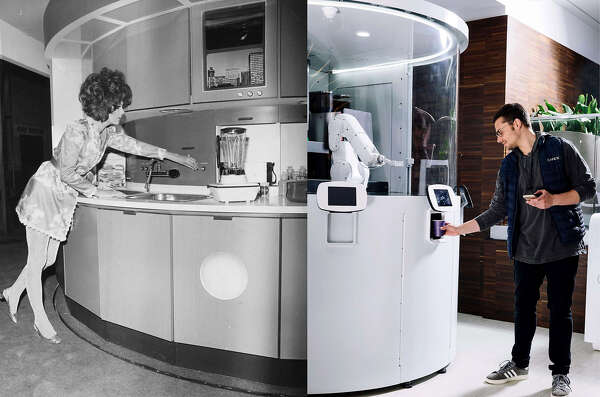“San Francisco was never much of a delivery city,” says Charles Bililies, owner of Souvla. It certainly wasn’t a part of his original business plan for the casual Greek-inspired restaurant, which has branches in Hayes Valley, the Mission District and North of the Panhandle.
“In 2014, delivery was zero percent of the business,” he says. “Now it’s about 24 percent of the business, which is pretty remarkable.” And so, with each new location he opens, he takes into account orders from Caviar, a San Francisco delivery service owned by the mobile payment company Square.
Nationwide, sales of food ordered through online delivery services could grow from $6 billion last year to $15.9 billion in 2020, Morgan Stanley projects.
Advertisement
Article continues below this ad
Just as increasing costs have killed off tablecloths and shrunk service staffs, the rise of delivery is already changing restaurants in both subtle and overt ways. Based on conversations with restaurateurs and commercial real estate brokers, here’s how those changes might look:
Tracing the next generation of farms, restaurants and kitchens in the Bay Area and beyond
•Restaurants will shrink dining rooms and enlarge kitchens to accommodate delivery, adding equipment to produce higher volumes of food, more tables for assembling large orders and more storage for takeout packages. Restaurant groups with off-site prep kitchens may use them to fulfill delivery orders.
•Dining rooms will also be subtly reconfigured, with additions such as a larger foyer that lets bike messengers skirt around diners waiting for a table and a cash-register station with shelves for bags awaiting pickup.
Advertisement
Article continues below this ad
•Alternatively, restaurants will install takeout windows or separate entrances for pickup. A short-term parking space in front of the business, where drivers from delivery services like DoorDash or GrubHub can park, may become a necessary investment.
•Chefs will design menus with a subset of dishes that travel well, destined for an edited-down delivery menu.
•Restaurants will increase staff in two roles: hosts who double as takeout coordinators, and kitchen workers who can fill bags as well as prepare plates for servers to bring to the table.
•Casual restaurants will space out multiple locations with an eye to covering greater stretches of the city and reducing delivery time and costs.
•The ease of home delivery will put even more pressure on restaurants to make in-house dining an experience, with a signature decor, creative dishes or food that must be consumed on site. (Bonus: It should photograph well, too.)
Advertisement
Article continues below this ad
Jonathan Kauffman is a San Francisco Chronicle staff writer. Email: jkauffman@sfchronicle.com Twitter: @jonkauffman


















